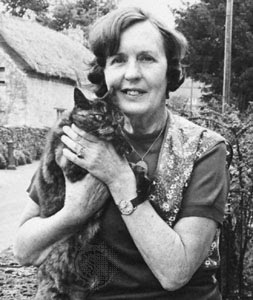This Blog accompanies my class Miss Bronte Meets Miss Pym. There are graphics and photos, bliographies and lists of books in print. Included is information about related topics and The other Brontes, Shirley Jackson, Laura Ingalls Wilder and Susan Glapsell. Please visit often, and feel free to visit whether you are in my course or not. In Memory of our Friend Cathy Berta
Miss Pym and a Friend

Monday, September 11, 2017
Dr. E's Doll Museum Blog: Remembering 9/11
Dr. E's Doll Museum Blog: Remembering 9/11: 16 years ago the world changed forever. It is also the 5th anniversary of the Bengazi attacks. Please take a moment to remember. Below, i...
Dr. E's Doll Museum Blog: Remembering 9/11
Dr. E's Doll Museum Blog: Remembering 9/11: 16 years ago the world changed forever. It is also the 5th anniversary of the Bengazi attacks. Please take a moment to remember. Below, i...
Thursday, September 7, 2017
Visiting Ancient Sites
When I was very little, I traveled extensively with my family. I stood at the Oracle of Delphi when I was nine. Now, I watch television shows of ancient archaeological sites. It thrills me when I am lucky enough to visit these places, and to stand where ancient people once stood. I feel their footsteps through the soles of my shoes. Did they in turn, wonder, when they stood on ground that those even more prehistoric than themselves, stood--there has to be a great connection, a collective memory or consciousness of humanity. It must live through the sands around the great pyramids, on Acropolis, at Delphi, and so many more places now real estate for ghosts, but once as active and lively as our own Chicagos, New Yorks, and Denvers.
Monday, September 4, 2017
The Girl of Glass and Snow
The Girl of Glass and Snow:
Feminist revision of fairy tales is not new. Interpretation of any story is to be
expected. Literature dies without vision
and revision.
Pointing out the negative archetype aimed at older women in
fairy tales is not a bad thing.
Remember, “older” could mean late twenties. I was shocked last week at a wedding shower
of friends whose family belongs to a strict religious denomination. I heard comments describing her as an “older”
bride. She’s 26. I was older than that when I married. I must be a Methuselah bride. Or corpse bride. Another friend at 30 said she was called a
Cougar. My response was, “If you’re a
cougar, then I’m a saber-toothed tiger!”
Seriously, I’m not considered old. I still think the way I did in my twenties,
and I don’t dress like I’m old.
Yet, there is a stigma that is ancient against older women,
however older is defined. There is not
enough room here to explore the hag archetype, and how it has affected
literature, myth and history. Certainly,
that archetype was aimed at Erzebet.
When her husband died, she was somewhere in her 40s, wealthy, alone, of
a different religion. Other women in her
position were also accused of witchcraft and perversion as she was, their
properties forfeit.
The same thing happened to accused “witches”
everywhere. Our own Salem Witch Trials
followed the same pattern. The old, the
poor, the healers, the single, the too wealthy, the outsiders, these were
denounced. Sarah Good, the pauper of Salem
On a PBS special of Walt Disney last night, I watched their
account of the making of Snow White, and the implications of the magic
mirror. Mirrors are huge in feminist
studies, and in the myth of Erzebet Bathory.
In a play by Velasquez, Las
Meninas, the painter was brought before The Inquisition for a painting of
Venus in front of the mirror.
The hag, or evil witch, and Maleficent, were straight out of
the examples in Sheila Jeffries’ excellent book, The Spinster and her Enemies.
Older women, widows, those retired in late Middle Age, the
Marcia’s and Leonora Eyre’s of Barbara Pym’s works, her Miss Clovis’ and
Excellent Women, there has often been no room for these in societies all over
the world. Native American peoples in
some cases left widows out to die among the elements. James Michener told their
story in fictional with his novel, Centennial. Some Hindu societies had them die on their
husband’s funeral pyres. Even well
meaning modern societies for orphans and widows marginalize them. They are usually older, over 25, let’s say,
and may have property which everyone else is only too happy to divest.
The story of Erzebet is a cautionary tale, universal in its
tragedy, embodied in our fairy tales and retellings of “Snow White.”
Subscribe to:
Posts (Atom)